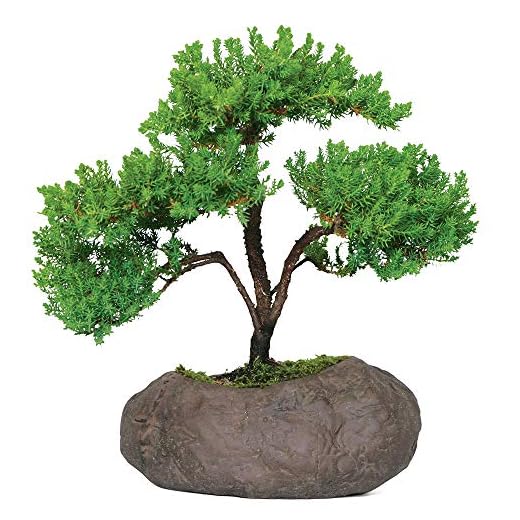
Bonsai larch trees are known for their graceful and delicate beauty, but like any living plant, they can experience periods of decline and even death. As a bonsai enthusiast, it is essential to be able to recognize the signs of a dying or dead branch in order to take appropriate action and save the overall health of your tree.
One of the first signs to look for is a lack of new growth on a particular branch. Inspect your bonsai larch closely and check for signs of new buds or leaves on each branch. If you notice that a specific branch has not produced any new growth compared to the rest of the tree, it may be an indication that the branch is no longer alive.
Another important clue is the color of the branches. Living branches of a bonsai larch typically have a vibrant green color. However, if you notice that a branch has turned brown, black, or has a shriveled appearance, it could be a sign that the branch has died. This discoloration is often an indication that the branch is no longer receiving the necessary nutrients and water to sustain its life.
Furthermore, pay attention to the flexibility of the branches. Living branches of a bonsai larch are usually relatively flexible and supple when gently bent. On the other hand, dead branches often become brittle and break easily when you try to bend them. If a branch lacks flexibility and breaks, it is likely deceased and should be removed to prevent any potential disease from spreading to other parts of the tree.
By staying vigilant and regularly monitoring the growth and appearance of your bonsai larch, you can catch any dead or dying branches early on and take the necessary steps to revive or remove them. Remember that proper care, including appropriate watering and nutrition, can greatly increase the overall health and longevity of your bonsai tree.
Signs of dead bonsai larch branches
Identifying whether a bonsai larch branch is dead or alive is crucial for proper care and maintenance. Here are some signs to look out for:
- No foliage: Lack of leaves or needles on a branch indicates that it may be dead. Live branches typically have some form of foliage attached.
- No buds: Healthy bonsai larch branches usually develop buds in the spring. If a branch fails to produce any buds, it is likely dead.
- No flexibility: Gently bending a branch should reveal some flexibility in live branches. Dead branches, on the other hand, will feel stiff and brittle.
- Discoloration: Dead bonsai larch branches may exhibit a brown or black color, indicating a lack of vitality. In contrast, live branches are typically green or have a healthy, vibrant appearance.
- No response to pruning: If a branch fails to produce new growth after pruning or trimming, it is likely dead. Live branches generally respond to pruning by developing new shoots or foliage.
It is important to regularly inspect your bonsai larch tree and identify any dead branches. Removing dead branches not only improves the tree’s overall appearance, but it also promotes healthy growth and prevents the spread of disease or pests. When in doubt, consult a bonsai expert for guidance.
Lack of new growth
If you notice that your bonsai larch branches have not shown any new growth for an extended period of time, it could be a sign that they are dead. Larch trees are known for their vigorous growth, so a lack of new buds and shoots could indicate potential issues.
One possible reason for this lack of growth is insufficient light. Bonsai larch trees require direct sunlight for at least a few hours a day in order to thrive. If your bonsai is not receiving enough light, the branches may become weak and eventually die off.
Another factor to consider is improper watering. Overwatering or underwatering can both cause stress to the tree and lead to the death of branches. Larch trees prefer a moist, well-draining soil, so make sure to water your bonsai adequately and allow the soil to dry slightly between waterings.
Disease or pest infestation could also be causing the lack of new growth. Check for any signs of disease, such as discolored foliage or lesions on the branches. Additionally, inspect your bonsai for any signs of pests, such as scale insects or spider mites.
In some cases, the lack of new growth could be a natural part of the tree’s growth cycle. Larch trees typically go through a period of dormancy during the winter months, where growth slows down or stops completely. If it is currently winter or early spring, it is possible that the lack of new growth is simply due to the tree being in its dormant phase.
To determine if your bonsai larch branches are dead or dormant, you can gently scrape the bark with your fingernail. If there is green tissue underneath, it indicates the branch is still alive. However, if the tissue is brown or dry, it is likely dead.
If you are unsure about the health of your bonsai larch branches, it is always best to consult with a bonsai expert or arborist who can provide guidance and advice.
Brittle and dry branches
If you notice that the branches of your bonsai larch are brittle and dry, it could be a sign that they are dead. Dead branches are often weak and prone to breakage. To test if a branch is dead, gently bend it. If it snaps or breaks easily, it is likely dead.
In addition to being brittle and dry, dead branches may also lack buds or leaves. Take a close look at the branches and inspect for any signs of life. Healthy branches should have buds that are plump and green or brown in color, depending on the season.
Causes of dead branches
There are several possible causes of dead branches in a bonsai larch. One common cause is lack of water or improper watering habits. Larch trees require regular watering, especially during the growing season, to ensure they stay hydrated.
Another cause may be disease or pest infestation. Fungal infections or insect infestations can weaken the branches and cause them to die off. It is important to monitor your bonsai tree for any signs of pests or diseases and take appropriate action to address the issue.
Absence of Buds
If you notice the absence of buds on your bonsai larch branches, it may indicate that the branches are dead. Buds are a sign of life and growth in a tree, so their absence can be a cause for concern.
When a bonsai larch branch is dead, it will not produce any buds. You can check for buds by closely examining the branches. Look for small, round, and swollen areas along the branches where buds would typically form. If you do not see any buds or signs of bud formation, it is likely that the branch is dead.
It is important to note that not all larch branches will have buds at the same time, especially during certain seasons. However, if the majority of branches do not have any buds, it is a strong indication that the tree is unhealthy and some branches may be dead.
If you suspect that a branch is dead, you can perform a scratch test to further confirm its status. Use a small knife or your fingernail to gently scratch the bark on the branch. If the wood beneath the bark is dry, brittle, and brown, it is a clear indication that the branch is dead.
If you have multiple branches on your bonsai larch that are showing no signs of life, it is advisable to consult with a bonsai expert to assess the overall health of your tree and provide guidance on any necessary actions to revive or remove dead branches.
Discoloration and browning
One of the most evident signs that a bonsai larch branch is dead is discoloration and browning of the foliage. Normally, larch trees have vibrant green needles that indicate the branch is healthy. However, when a branch starts to turn brown or develop a dull, yellowish color, it is a clear indication that the branch has died.
Dead branches can be easily identified by their lack of vitality and color. These branches will not have any signs of new growth, and their needles will become brittle and dry to the touch. Additionally, dead branches may exhibit a grayish coloration, indicating that the tissue is no longer receiving nutrients.
If you notice discoloration or browning on the branches of your bonsai larch, it is essential to examine the entire branch carefully. Start at the tip and work your way down towards the base, checking for any signs of life. Look for green sprouts, buds, or any indications of new growth. If these are absent, it is likely that the branch is dead.
It’s important to note that some temporary discoloration or browning may occur due to natural seasonal changes or environmental stress. However, if the discoloration persists and no signs of life are present, it is safe to conclude that the branch is dead and should be pruned to maintain the overall health of the bonsai.










